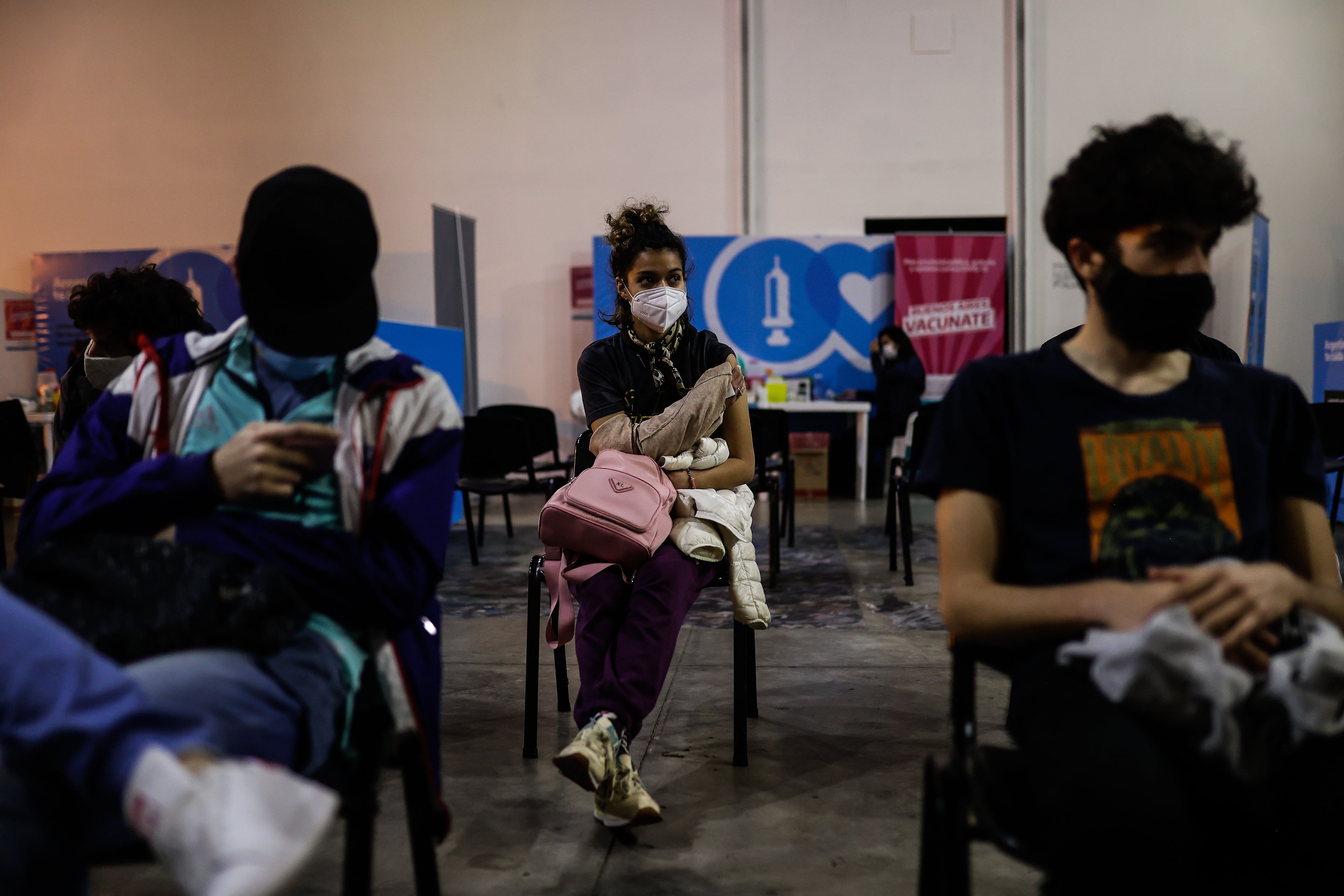
Since the second half of February, Ómicron has been the only variant of the coronavirus circulating in Argentina. There are no more people with COVID-19 with Delta, Gamma, Alpha and Lambda variants. It's all Omicron. Most acquired the sublineage BA.1. But the new genomic surveillance report from the ANLIS/Malbrán Institute reported that they are already detecting more cases of patients with BA.2 infection, the sublineage that is causing a spike in COVID-19 cases in Europe.
Malbrán researchers have analyzed 23989 samples for the identification of coronavirus variants since January last year. They are studied by genomic sequencing and RT-PCR screening. As of March, 27 cases of the Ómicron BA.2 variant have been detected. Nine of the 27 were persons with a history of international travel and 18 cases are under investigation.
Cases with a history of international travel come from Brazil, Uruguay, the Dominican Republic, Switzerland and Spain. The provinces of residence of the cases are the City of Buenos Aires (8 cases) and the province of Buenos Aires (1 case). Eighteen cases are under investigation: 12 of the 18 live in the City of Buenos Aires, 5 in the province of Buenos Aires and 1 in Santa Fe.

From studies conducted in Denmark, it is known that the BA.2 sublineage is more transmissible compared to BA.1. It's 30% more transmissible than the other sublineage. In the United Kingdom, the UK Health Security Agency estimates that subvariant BA.2 is growing 80% faster than BA.
The season of autumn has arrived. T he slow progress of the BA.2 sublinage in Argentina opens up the possibility of COVID-19 cases increasing again. The curve was declining since the second half of January nationally. Based on the burden of cases in the National Ministry of Health system, confirmed cases fell by 29% over the past 14 days nationwide.
However, the data could be distorted because there were recently cases of COVID-19 from previous months. “If we consider the cases of COVID-19 by the date of onset of symptoms, in the city of Buenos Aires they are not going down: 80 cases on average per 100,000 inhabitants. In the province of Buenos Aires, they went up a few days, but they would be going down,” Jorge Aliaga, doctor of physics and analyst of pandemic data at the National University of Hurlingham, told Infobae.
Bed occupations in intensive care continued to decline since the end of January and during March. But during the last week there was a 10% increase in daily hospitalizations if weekly averages were taken into account. Since March 9, deaths according to data upload date are counted at less than 60 as a weekly average.

Meanwhile, the pace of vaccination against COVID-19 continues to plummet. Doses are available in vaccinatories nationwide to complete the primary schedule, to receive the third booster dose, and for the fourth dose only in the case of people who had received Sinopharm and those who had been immunocompromised. Weekly dose applications became in March 2022 at a level similar to that found in April of last year, when the wave caused by the Gamma variant occurred. Since the last week of February, only 559,889 doses of vaccines have been applied. The following week, it increased to 714,225 and last week 640,513 doses were applied.
The COVID-19 vaccination plan in Argentina began on December 29, 2020. At that time, it was planned to vaccinate only 24 million people who were in the highest risk groups of complications and essential personnel. But since June it has been extended to adults without risk factors. In August it was added to adolescents and from October to girls and boys aged 3 to 11.
In the context of the wave by Ómicron, since the second half of December the application of vaccine doses grew by 126% in two weeks. But the reversal of the wave since January, the postponement of applications due to having had COVID-19 and the perception of low risk, among other factors, have led to reduced adherence to vaccination. 77%% of applications are additional or booster doses.
From the Argentine Association of Respiratory Medicine, infectiologist Alejandro Chirinos commented that “the effervescence of the pandemic and then the reduction in cases of COVID-19 meant that there are now people who have relaxed and have not yet gone to get vaccinated. But we are stressing that they are going to complete the primary schedule or receive the additional or booster doses that correspond to each one.”

For Dr. Angela Gentile of the Argentine Society of Pediatrics and the National Commission on Vaccine Safety, “the effectiveness of all three doses is high against Ómicron. But there are now some barriers that have slowed the pace of vaccination even though doses are available. The flu virus is circulating and some believe that the coronavirus pandemic is over. However, that is not true: the coronavirus continues to circulate in Argentina. Vaccination needs to be provided in places such as parks and other spaces where people are.”
The infectiologist Leda Guzzi, from the Argentine Society of Infectious Diseases, considered “the perception of the risk of COVID-19 was lost. But the additional or booster dose as a third dose is key to preventing hospitalization and death in the face of the different Ómicron sublineages.” For Andrea Uboldi, from the National Immunization Commission, in April it could increase the application of vaccines again because people who had COVID-19 in January had to delay the booster dose.
The possibility of applying a fourth dose of vaccines to the general population is also being debated around the world. The United States, Chile, Denmark, Germany, Sweden and the United Kingdom limited second booster doses to immunosuppressed people. But this week, the UK expanded applications to residents in nursing homes, those over 75 and those who are immunosuppressed over 12 years old. This measure was taken after the spike in cases in that country, with a record level of infections in people over 70 years of age. In South Korea, a fourth dose is being recommended for residents and workers in nursing homes and care homes, as well as for the immunosuppressed, following the increase in infections among older people.

Israel was the first country to administer a fourth dose more widely. It began distributing third doses in July, and since January, anyone who is a healthcare worker, is immunocompromised or over 60 years old can receive a fourth dose.
In Argentina, the decision to give a fourth dose to the general population has not yet been taken. According to the Minister of Health of the Nation, Carla Vizzotti, in a meeting with the Argentine Network of Science Journalism, an evaluation will be made with the National Commission on Immunization that will take into account the epidemiological situation, and the different groups of the population. “It's not mathematics,” he said. He clarified that the situation in Argentina is different from that in Chile and Uruguay because those countries applied the Sinovac vaccine, which provided less protection, and then booster doses were applied to increase protection against hospitalization and death.
Regarding the fourth dose, Dr. Guzzi told Infobae today that “there is still no conclusive scientific evidence on the benefit of applying it to the general population. What is known is that the three doses do serve to achieve protection. The fourth dose generates a slight increase in antibodies. But it is not significant to indicate it in the general population. More evidence is probably needed. The availability of new vaccines for different variants of the coronavirus could be an ideal scenario. But if that doesn't happen, maybe you need to apply a booster when the antibodies fall. Keep in mind that everything is dynamic and everything can change.”
KEEP READING:
Últimas Noticias
Debanhi Escobar: they secured the motel where she was found lifeless in a cistern
Members of the Specialized Prosecutor's Office in Nuevo León secured the Nueva Castilla Motel as part of the investigations into the case

The oldest person in the world died at the age of 119
Kane Tanaka lived in Japan. She was born six months earlier than George Orwell, the same year that the Wright brothers first flew, and Marie Curie became the first woman to win a Nobel Prize

Macabre find in CDMX: they left a body bagged and tied in a taxi
The body was left in the back seats of the car. It was covered with black bags and tied with industrial tape
The eagles of America will face Manchester City in a duel of legends. Here are the details
The top Mexican football champion will play a match with Pep Guardiola's squad in the Lone Star Cup

Why is it good to bring dogs out to know the world when they are puppies
A so-called protection against the spread of diseases threatens the integral development of dogs




